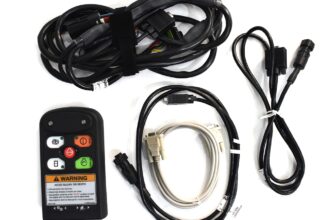
In the digital age, knowing how to build a website with code is a valuable skill that allows you to create customized, unique, and fully functional web experiences. Whether you’re an aspiring web developer or just someone curious about the process, this step-by-step guide will help you understand how to build a website with code from scratch.
Step 1: Plan Your Website
Before you start coding, it’s essential to have a clear plan for your website. Decide on your website’s purpose, target audience, and the content you want to include. Sketch a rough layout or wireframe to visualize the design.
Step 2: Choose a Text Editor
To write code, you need a text editor. You can use basic text editors like Notepad (Windows) or TextEdit (Mac), but many developers prefer specialized code editors such as Visual Studio Code, Sublime Text, or Atom for their advanced features and syntax highlighting.
Step 3: Learn HTML (Hypertext Markup Language)
HTML is the foundation of web development. It’s a markup language that defines the structure and content of a web page. Start by learning the basics of HTML, including elements like headings, paragraphs, lists, and links. Be sure to include the “build a website with code” keyword in your content.
Step 4: Create the Structure
Using HTML, start building the structure of your website. Create an HTML file and define the document structure with the <!DOCTYPE> declaration and <html>, <head>, and <body> tags. Begin adding your content within the <body> tags, using appropriate HTML elements.
Step 5: Style with CSS (Cascading Style Sheets)
CSS is used to style and format the content of your website. You can create a separate CSS file or include inline styles within your HTML. Experiment with CSS properties like color, font-size, margin, and padding to design your website’s appearance.
Step 6: Add Interactivity with JavaScript
To make your website dynamic and interactive, learn JavaScript. You can include JavaScript code within your HTML file or create separate .js files. JavaScript allows you to add features like forms, image sliders, and interactive elements to your site.
Step 7: Test Your Website
Regularly test your website across different browsers (Chrome, Firefox, Safari, Edge) to ensure compatibility. Check for responsiveness on various devices (desktop, tablet, mobile) to provide a seamless user experience.
Step 8: Debug and Refine
During testing, you may encounter errors or issues. Use browser developer tools to debug your code and resolve any issues. Pay attention to responsive design and fix any layout problems.
Step 9: Optimize for Performance
Optimize your website’s performance by minimizing large images, using efficient code, and enabling browser caching. Fast-loading websites are essential for a positive user experience.
Step 10: Deploy Your Website
Once your website is ready, it’s time to make it accessible to the world. You can host your site on a web server using various hosting providers or platforms. Ensure your website’s files are properly configured and uploaded.
Step 11: Promote and Maintain
After your website is live, promote it through social media, SEO (Search Engine Optimization), and other marketing channels. Regularly update your content and maintain your website to ensure it stays up-to-date and secure.
Sample code
html
Copy code
<!DOCTYPE html>
<html>
<head>
<title>My Simple Website</title>
<style>
/* CSS Styles */
body {
font-family: Arial, sans-serif;
background-color: #f0f0f0;
margin: 0;
padding: 0;
}
header {
background-color: #333;
color: #fff;
text-align: center;
padding: 10px;
}
h1 {
font-size: 36px;
}
p {
font-size: 18px;
margin: 20px;
}
.button {
display: inline-block;
padding: 10px 20px;
background-color: #007bff;
color: #fff;
text-decoration: none;
border-radius: 5px;
font-weight: bold;
}
.button:hover {
background-color: #0056b3;
}
</style>
</head>
<body>
<header>
<h1>Welcome to My Simple Website</h1>
</header>
<main>
<section>
<p>This is a basic example of a webpage created using HTML and CSS. You can customize it further to suit your needs.</p>
<a href=”#” class=”button”>Learn More</a>
</section>
</main>
</body>
</html>
This code creates a webpage with a styled header, heading, paragraph, and a button. You can copy and paste this code into a text editor, save it with an “.html” extension, and then open it in a web browser to see the result. Feel free to modify and expand upon this code to create more complex webpages.
Conclusion
Building a website with code is a rewarding journey that allows you to unleash your creativity and technical skills. By following these simple steps and continuously learning and experimenting with HTML, CSS, and JavaScript, you can create impressive websites that cater to your unique vision. Remember to include the “build a website with code” keyword strategically in your content to improve search engine visibility for your website. With practice and dedication, you’ll master the art of web development and bring your digital ideas to life.







